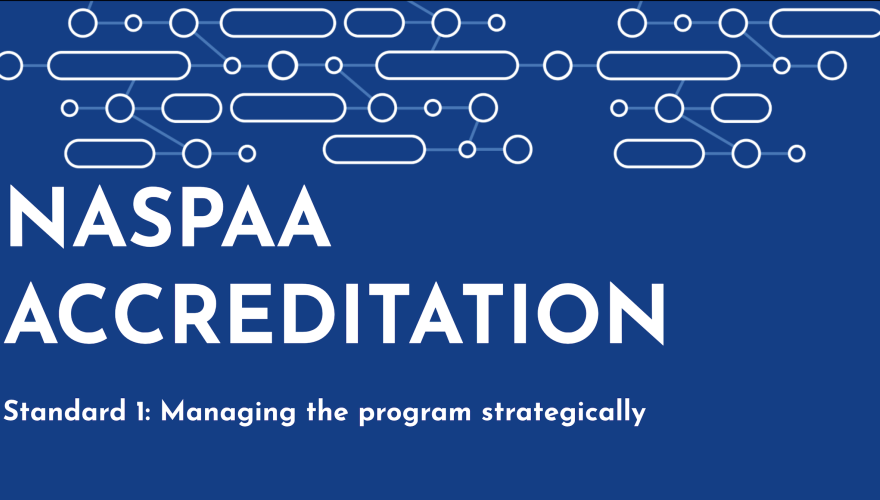Standard 1: Managing the Program Strategically
Standard 1.1: Mission Statement
The program will have a statement of mission that guides performance expectations and their evaluation, including
- its purpose and public service values, given the program’s particular emphasis on public affairs, administration, and policy
- the population of students, employers, and professionals the program intends to serve, and
- the contributions it intends to produce to advance the knowledge, research, and practice of public affairs, administration, and policy.
Standard 1.2: Performance Expectations
The program will establish observable program goals, objectives, and outcomes consistent with its mission and of which student learning is one, but not the only component.
Standard 1.3: Program Evaluation
The program will collect, apply, and report information about its performance and its operations to guide the evolution of the program’s mission and the program’s design and continuous improvement with respect to standards two through seven.
NASPAA accreditation is based around a program's mission. Programs are expected to align all aspects of delivery and decision making with their mission and strategic goals. The mission should permeate all activities of a program: student and faculty recruitment, hiring, and retention, curriculum decisions, governance, diversity planning, communications, and resource allocation.
The NASPAA Standards also expect that a program's mission both informs its performance expectations and helps configure its process of program evaluation for the purpose of continuous improvement. Programs are asked in their Self-Study Report to demonstrate linkages between the elements in Standard 1 and all the other Standards 2-7.
By using the mission to guide program evaluation, programs can assess whether or not they are meeting their strategic goals – where are your program's strengths and weaknesses? Opportunities?

